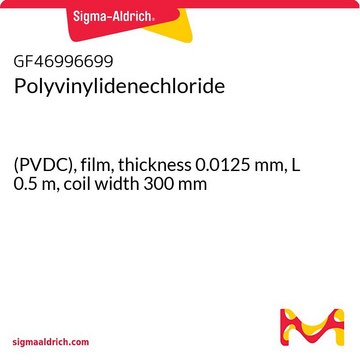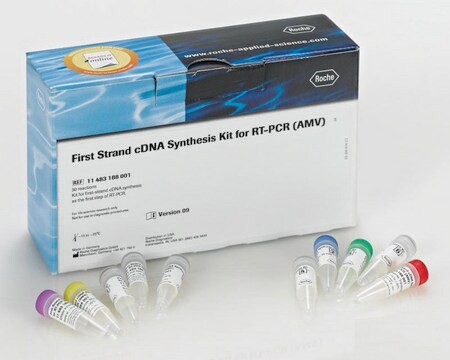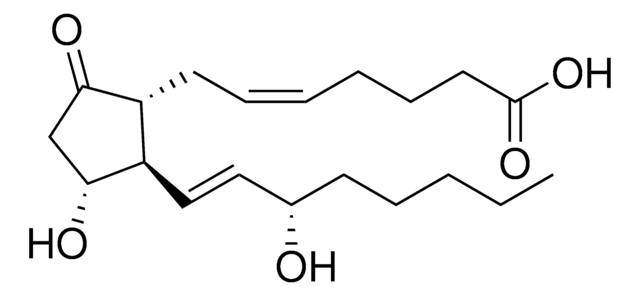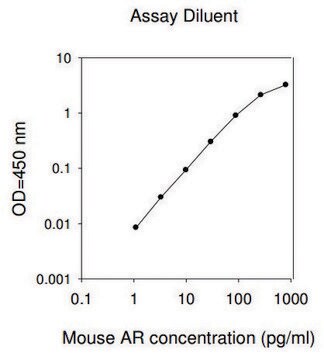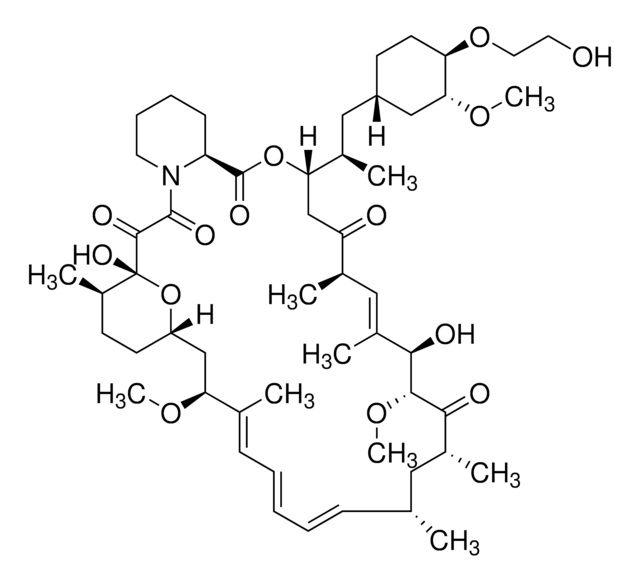RAB0019
Human Amphiregulin ELISA Kit
for serum, plasma, cell culture supernatant and urine
Synonim(y):
AR
Zaloguj sięWyświetlanie cen organizacyjnych i kontraktowych
About This Item
Kod UNSPSC:
41116158
NACRES:
NA.32
Polecane produkty
reaktywność gatunkowa
human
opakowanie
kit of 96 wells (12 strips x 8 wells)
metody
ELISA: suitable
capture ELISA: suitable
moc wejściowa
sample type plasma
sample type cell culture supernatant(s)
sample type urine
sample type serum
assay range
inter-assay cv: <12%
intra-assay cv: <10%
sensitivity: 10 pg/mL
standard curve range: 16.46-4000 pg/mL
metoda wykrywania
colorimetric
Warunki transportu
wet ice
temp. przechowywania
−20°C
informacje o genach
human ... AREG(374)
Opis ogólny
The Human Amphiregulin (AR) ELISA (Enzyme-Linked Immunosorbent Assay) kit is an in vitro enzyme-linked immunosorbent assay for the quantitative measurement of human AR in serum, plasma, cell culture supernatants and urine.
The AREG (amphiregulin) gene codes for a shedding ectodomain, derived from a transmembrane precursor of 252 amino acids. The encoded protein is released into blood or cellular vicinity through autocrine and paracrine. Areg is predominantly expressed in epithelial, mesenchymal cells and also by active immune cells. The AREG gene is mapped to human chromosome 4q13.3.
The AREG (amphiregulin) gene codes for a shedding ectodomain, derived from a transmembrane precursor of 252 amino acids. The encoded protein is released into blood or cellular vicinity through autocrine and paracrine. Areg is predominantly expressed in epithelial, mesenchymal cells and also by active immune cells. The AREG gene is mapped to human chromosome 4q13.3.
Immunogen
Recombinant Human Amphiregulin
Zastosowanie
Please refer to the attached General ELISA KIT Procedure (sandwich, competitive & Indirect ELISA)
Human Amphiregulin ELISA Kit has been used to estimate the plasma concentration of amphiregulin by ELISA.
Human Amphiregulin ELISA Kit has been used to estimate the plasma concentration of amphiregulin by ELISA.
Działania biochem./fizjol.
Areg (amphiregulin) stimulates growth-signaling pathways via EGF (epidermal growth factor) receptors. Areg participates in the organogenesis of mammary gland. It is regarded as a pro-oncogenic factor and contributes to tumor progression. Upregulation of the AREG gene is observed in cancer and resists chemotherapy. AREG reduces E-cadherin expression in order to promote invasion and progression of ovarian cancer.
Inne uwagi
A sample Certificate of Analysis is available for this product.
Please type the word sample in the text box provided for lot number.
Please type the word sample in the text box provided for lot number.
Ta strona może zawierać tekst przetłumaczony maszynowo.
Elementy zestawu są też dostępne oddzielnie
Numer produktu
Opis
Karta charakterystyki
- RABELADAELISA 1X Assay/Sample Diluent Buffer A (Item D1)Karta charakterystyki
- RABELADBELISA 5X Assay/Sample Diluent Buffer B (Item E1)Karta charakterystyki
- RABSTOP3ELISA Stop Solution (Item I)Karta charakterystyki
- RABTMB3ELISA Colorimetric TMB Reagent (HRP Substrate, Item H)Karta charakterystyki
- RABWASH420X Wash Buffer (Item B)Karta charakterystyki
Hasło ostrzegawcze
Warning
Zwroty wskazujące rodzaj zagrożenia
Zwroty wskazujące środki ostrożności
Klasyfikacja zagrożeń
Met. Corr. 1
Kod klasy składowania
8A - Combustible corrosive hazardous materials
Wybierz jedną z najnowszych wersji:
Masz już ten produkt?
Dokumenty związane z niedawno zakupionymi produktami zostały zamieszczone w Bibliotece dokumentów.
Correlation between Trop2 and amphiregulin coexpression and overall survival in gastric cancer.
Zhao W, et al.
Cancer Medicine, 6(5), 994-1001 (2017)
Predictive blood plasma biomarkers for EGFR inhibitor-induced skin rash.
Hichert V, et al.
Oncotarget, 8(21), 35193-35193 (2017)
Sprouty2 inhibits amphiregulin-induced down-regulation of E-cadherin and cell invasion in human ovarian cancer cells.
Cheng J C, et al.
Oncotarget, 7(49), 81645-81645 (2016)
Abnormal amphiregulin expression correlates with gastric cancer prognosis.
Wang B, et al.
Oncotarget, 7(47), 76684-76684 (2016)
Masaru Karakawa et al.
Journal of cellular physiology, 229(12), 1935-1945 (2014-04-09)
The cutaneous T cell-attracting chemokine (CTACK)/CCL27 is indispensable in skin inflammation. CTACK/CCL27 is exclusively produced by epidermal keratinocytes to attract CCR10-expressing T lymphocytes to the skin. We investigated the mechanism of CTACK/CCL27 production from normal human epidermal keratinocytes (NHEKs) by
Nasz zespół naukowców ma doświadczenie we wszystkich obszarach badań, w tym w naukach przyrodniczych, materiałoznawstwie, syntezie chemicznej, chromatografii, analityce i wielu innych dziedzinach.
Skontaktuj się z zespołem ds. pomocy technicznej